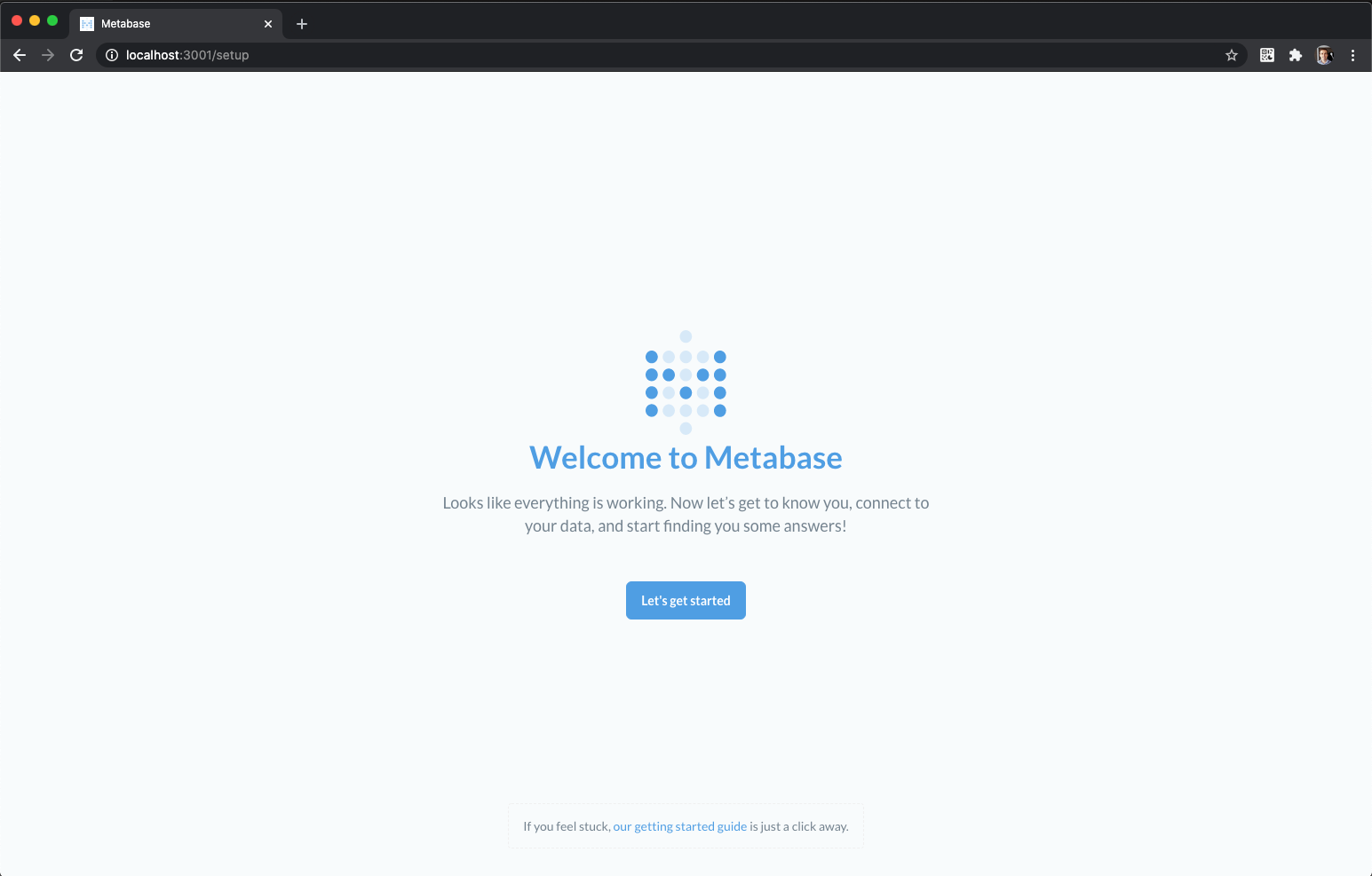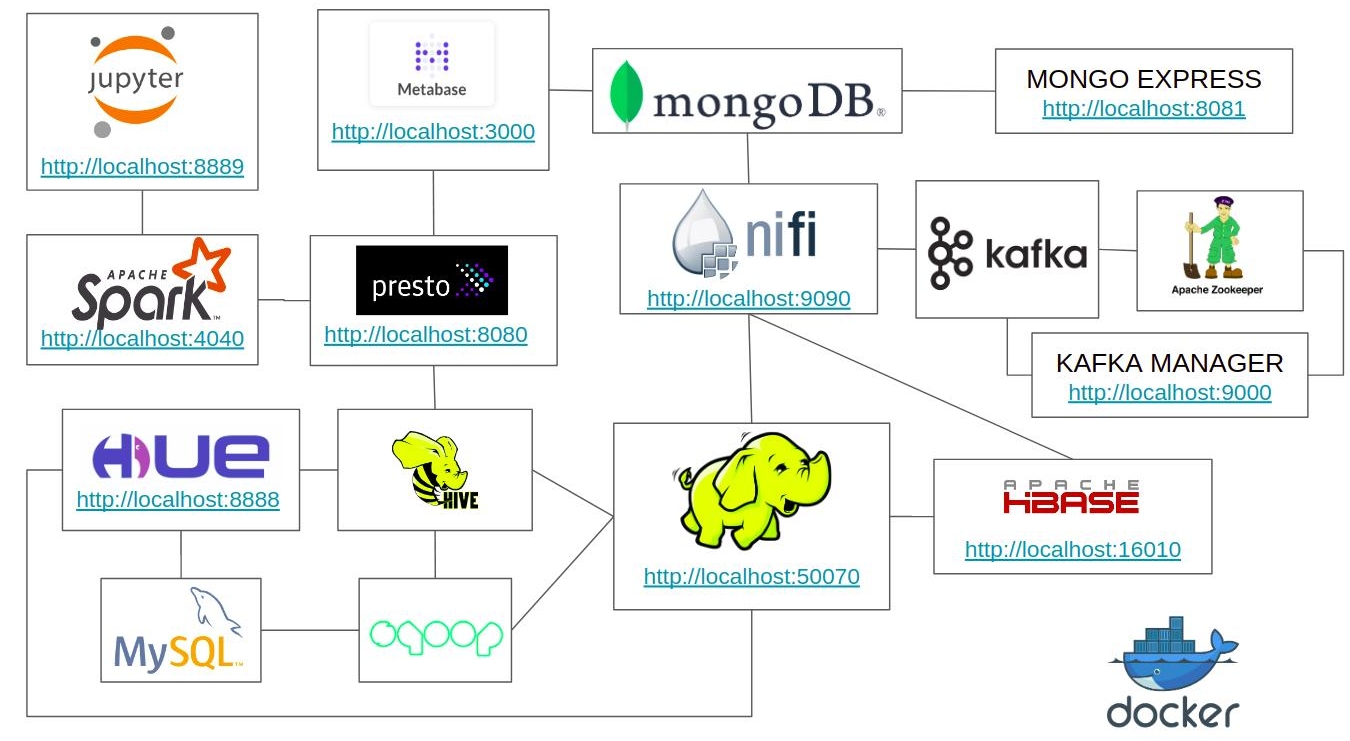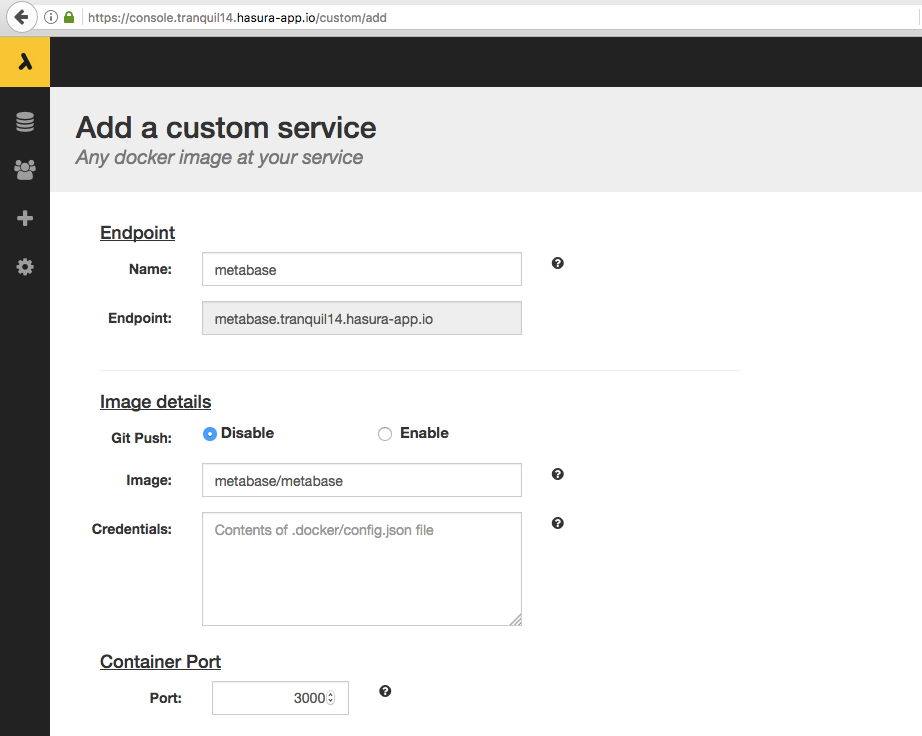Docker Metabase
- Metabase Docker Compose
- Metabase Docker-compose Postgres
- Metabase Github
- Metbase
- Docker Metabase/metabase
- Metabase Docker Https
You can use docker logs -f metabase to follow the rest of the initialization progress. Once the Metabase startup completes you can access the app at localhost:3000. Since Docker containers have their own ports and we just map them to the system ports as needed it’s easy to move Metabase onto a different system port if you wish. Metabase is built and packaged as a Java jar file and can be run anywhere that Java is available. Below we provide detailed instructions on how to install and run Metabase in a variety of common configurations. Running the Jar File This is the simplest and most basic way of running Metabase. How to View a Table in a SQL Server Database Need to know how you can view a table within a SQL server database? Using the Enterprise Manager, this can be achieved with just a few simple steps. Now let’s pull a docker Metabase image. Docker pull metabase/metabase. And run the image. Docker run -d -p 3000:3000 -name metabase metabase/metabase. If you use VirtualBox/Ubuntu (or other Linux) as your main working environment.
v0.39.0.1 / Troubleshooting Guide / Docker

While Docker simplifies a lot of aspects of running Metabase, there are a number of potential pitfalls to keep in mind.
Metabase provides an official Docker image via Dockerhub that can be used for deployments on any system that is running Docker. If you’re trying to upgrade your Metabase version on Docker, check out these upgrading instructions. Launching Metabase on a new container.
If you are having issues with Metabase under Docker, we recommend going through the troubleshooting process below. Then look below for details about the specific issue you’ve found.
Troubleshooting Process
- Check that the container is running
- Check that the server is running inside the container
- Check whether Metabase is using the correct application database
- Check that you can connect to the Docker host on the Metabase port
- Check that you can connect to the container from the Docker host
- Check that you can connect to the server from within the container

Specific Problems
Metabase container exits without starting the server
Run docker ps to see if the Metabase container is currently running. If it is move on to the next step.
If docker ps does not show the running container, then list the stopped containers by running:
Microsoft remote desktop connection client for mac. docker ps -a | grep metabase/metabase
And look for the container that exited most recently. Note the container ID.Look at that container’s logs with:
Docker logs CONTAINER_ID
Metabase Container is running but the Server is not
How to detect this:
Run docker ps to make sure the container is running
The server should be logging to the Docker container logs. Check this by running:
docker logs CONTAINER_NAME
You should see a line like this at the beginning:
and eventually:
If you see the below lines:
How to fix this:
Check this for errors about connecting to the application database.Watch the logs to see if Metabase is still being started:
Docker logs -f CONTAINER_ID
will let you see the logs as they are printed.
If the container is being killed before it finished starting it could be a health check timeout in the orchestration service used to start the container, such as Docker Cloud, or Elastic Beanstalk.
If the container is not being killed from the outside, and is failing to start anyway, this problem is probably not specific to Docker. If you are using a Metabase-supplied image, you should open a GitHub issue.
Not connecting to a remote application database

How to detect this:
If this is a new Metabase instance, then the database you specified via the environment variables will be empty. If this is an existing Metabase instance with incorrect environment parameters, the server will create a new H2 embedded database to use for application data and you’ll see lines similar to these:
How to fix this:
Double check you are passing environments to Docker in the correct way.You can list the environment variables for a container with this command:
docker inspect some-postgres -f '{{ .Config.Env }}'
The Metabase server isn’t able to connect to a MySQL or PostgreSQL database
How to detect this:
The logs for the Docker container return an error message after the “Verifying Database Connection” line.
How to fix this:
Try to connect with mysql or psql commands with the connection string parameters you are passing in via the environment variables.

If you can’t connect to the database, the problem is due to either the credentials or connectivity. Verify that the credentials are correct. If you are able to log in with those credentials from another machine then try to make the same connection from the host running the Docker container.
One easy way to run this is to use Docker to start a container that has the appropriate client for your database. For Postgres this would look like:
docker run --name postgres-client --rm -ti --entrypoint /bin/bash postgres
Then from within that container try connecting to the database host using the client command in the container such as psql. If you are able to connect from another container on the same host, then try making that connection from within the Metabase Docker container itself:
docker exec -ti container-name bash
And try to connect to the database host using the nc command and check if the connection can be opened:
Metabase Docker Compose
nc -v your-db-host 5432
This will make it clear if this is a network or authentication problem.
The Metabase application database is not being persisted
How to detect this:
This occurs if you get the Setup screen every time you start the application. The most common root cause is not giving the Docker container a persistent filesystem mount to put the application database in.
How to fix this:
Make sure you are giving the container a persistent volume
The internal port isn’t being remapped correctly
How to detect this:
Run docker ps and look at the port mappingRun curl http://localhost:port-number-here/api/health. This should return a response with a JSON response like:
How to fix this:
Make sure to include a -p 3000:3000 or similar remapping in the docker run command you execute to start the Metabase container image.
Metabase can’t write or read to/from a file or directory
How to detect this:
A message in the logs will clearly indicate an IOError/Permission denied from Java, or errors from SQLite with the org.sqlite.core.NativeDB._open_utf8 form.
How to fix this:
Ensure that the user who is running Metabase has permission to read and write to the file or directory:
Metabase Docker-compose Postgres
- If you are running Metabase as a JAR file in your local machine or server, check the user who is running the Java process.
- If you’re running Metabase from the Docker container, make sure you’re using the
/metabase.dbdirectory.
Metabase Github
If you’re running Metabase from the JAR in any *nix (Unix like) operating system, in order to see which user is running Metabase, you have to open a terminal and type ps -uA | grep metabase.
Helpful tidbits
How to get to the shell in the Metabase container
Metbase
docker exec -ti CONTAINER_NAME bash
Docker Metabase/metabase
How to get the logs for the Metabase container
Metabase Docker Https
docker logs -f CONTAINER_NAME
